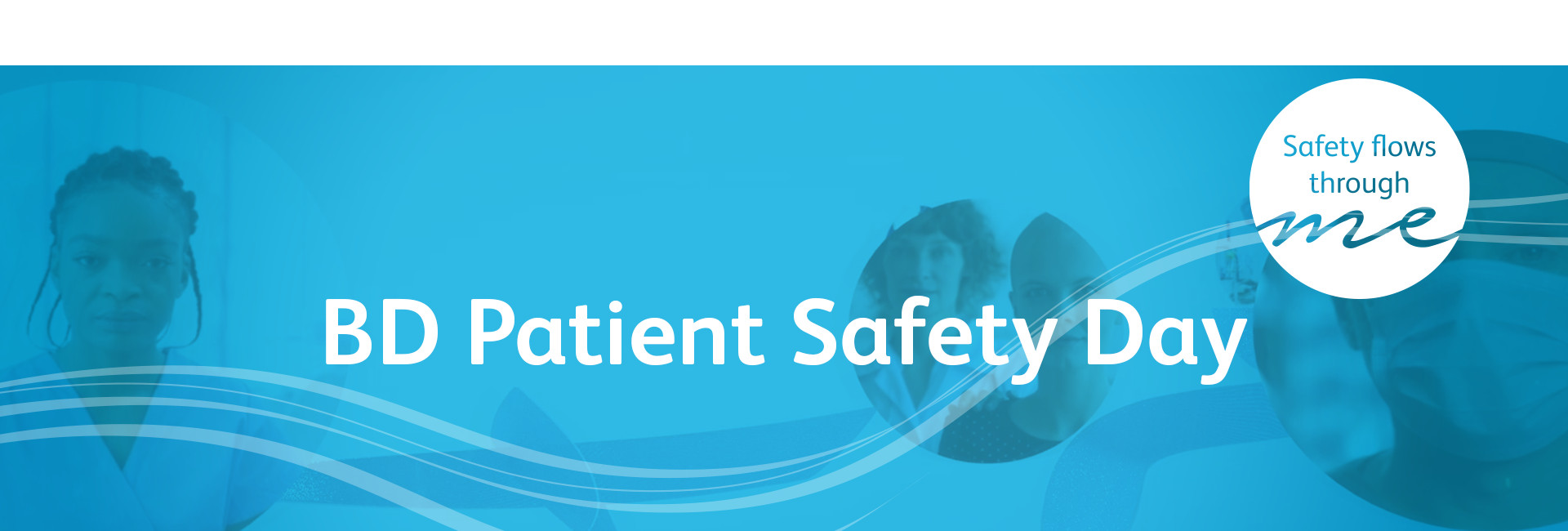Safety starts with a voice
Gain exclusive access to our international video series
Collaboration is a key factor in patient safety; when the healthcare community is aligned on one common goal, rising together with one united voice, a culture of safety emerges.
In celebration of World Patient Safety Day held by the World Health Organisation (WHO) on September 17th, 2021, BD is engaging with regional healthcare experts to share their stories and knowledge on patient safety in an international video series.
To identify practical ways of implementing the WHO Global Patient Safety Action Plan, the video series is designed to help empower the healthcare community by providing expertise and personal experiences from your peers as they work to improve safety in the patient journey.
Mark your calendars and join us for the launch of the series on September 17th!
Every voice makes a difference.
Discover the programme of the BD Patient Safety Day video series.
Neda Milevska-Kostova—Board Vice Chair, International Alliance of Patients’ Organisations (IAPO)
Fiona Garin—Vice President of Strategic Marketing, BD EMEA
Introduction: The WHO Global Patient Safety Action Plan 2021-2030—How can we contribute to implementing safer care for all?
In a BD-IAPO sponsored session, Neda Milevska-Kostova and Fiona Garin kick off BD Patient Safety Day by introducing the video series with success stories aligned with the WHO Global Patient Safety Action Plan. They discuss how we can all make a difference in patient safety, from patient to policymaker to industry leader, and how each role can implement and promote the WHO framework, working together to realise the WHO goal of “a world in which no one is harmed in healthcare, and every patient receives safe and respectful care, every time, everywhere.”
Dr Adam Linder—Founder and Chairman, Swedish Sepsis Trust (Sepsisfonden)
Ms Ulrika Knutsson—Founder and Communication Director, Swedish Sepsis Trust (Sepsisfonden)
A new path to safe sepsis care: How raising awareness in the general public and optimising sepsis care in Swedish hospitals can increase patient safety, and save lives.
Dr Adam Linder and Ms Ulrika Knutsson review the progress toward faster sepsis diagnosis and treatment in Sweden after recent approvals of sepsis care standards by Swedish authorities, showcasing the importance of policy in driving patient safety. They point out that relevant policies are a prerequisite, a rule of engagement, to establishing a greater safety culture in healthcare everywhere. More specifically, they tell the story of the doubling of sepsis awareness in recent years, the implementation of an algorithm to detect sepsis developed by the Multidisciplinary Sepsis Group and the impact of hospital audits carried out by Löf, Sweden’s county council and regional patient insurance.
Silvia Forni—Directeur of Quality and Evaluation at the Regional Health Agency (ARS) of Tuscany and Expert Patient from the European Patients’ Academy (EUPATI)
Organisational change and new models for the fight against infections and sepsis
In the fight against healthcare-associated infections and sepsis, Silvia Forni discusses optimisations being made in alignment with the WHO framework in the Tuscan region for better sepsis surveillance through programs aimed at spreading awareness and knowledge about sepsis. She will also explain the role of the patient in the healthcare decision-making process.
Dr Hjalmar Bouma—Internist at the University Medical Centre in Groningen (UMCG), Secretary and Board Member at Sepsisnet
The sepsis patient journey–Opportunities to develop personalised care and improve early recognition and outcomes long after discharge
Sepsis is a life-threatening syndrome; early recognition and prediction of the clinical course are difficult, and often survivors have a reduced quality of life for months to years after sepsis.2 In this session, Dr Bouma follows the journey of a potential sepsis patient from onset to discharge. Throughout this journey, Dr Bouma explains how UMCG collects health data in a large data-biobank “Acutelines,” to help identify early risk markers predictive of the clinical response to treatment, and why it is necessary to develop personalised medicine to improve outcome for patients.
Ron Daniels—Executive Director, UK Sepsis Trust
Thinking holistically about infection prevention and the urgent need for change
Ron Daniels discusses how point-of-care testing and diagnostics has changed the course of sepsis treatment and prevention. For better infection management, he emphasises the importance of embedding infection prevention into all healthcare practices. Additionally, he addresses the need for better screening and diagnostics of healthcare-associated infectious diseases to protect the healthcare workforce.
Dr Jose Luis Baquero Úbeda—Director and Scientific Coordinator, Spanish Patient Forum (FEP)
María del Mar Calvo—Nursing Supervisor of the Pediatric Intensive Care Unit at the Gregorio Marañón University General Hospital in Madrid, Spain
Dr María Cruz Martín Delgado—Head of Intensive Medicine Service at the Torrejón de Ardoz University Hospital in Madrid, Spain
Dr Jaime Poquet Jornet—Head of Pharmacy Services at the Hospital de Dénia in Alicante, Spain
The ICU perspective on medication errors—A conversation between a pharmacist, nurse, physician and patient
Every day in Spain, it is estimated that 17 medication errors occur for every 100 hospitalised patients.1 Due to the severity of its patients and the types of drugs handled, the intensive care unit (ICU) is especially at risk. However, progress is being made: a total of 25 healthcare organisations recently signed a manifesto for the creation of the Multidisciplinary Alliance against Medication Errors in Hospitalised Patients in Spain. Accompanied by the director of the Spanish Patients' Forum, a promoter of the manifesto, three Spanish healthcare professionals—a pharmacist, a physician and a nurse—discuss their perspectives on the impact of medication errors, where/why they still occur within the ICU, what is impeding progress, the role of healthcare regulation/safety programs and the solutions needed to reach the goal of zero medication errors.
Dr Torsten Hoppe-Tichy—Chief Pharmacist at the Heidelberg University Hospital, Former President of the German Association for Hospital Pharmacists (ADKA) and European Delegate for ADKA at the European Association for Hospital Pharmacists (EAHP)
How to prevent medication errors – a conversation with Dr. Hoppe-Tichy, chief pharmacist of the university hospital in Heidelberg
With his dedicated experience in closed-loop medication management system transformation and medication safety improvement initiatives, Dr Hoppe-Tichy discusses medication error prevention, the role of the pharmacist in medication safety and current medication error protocol at the Heidelberg University Hospital. Avoiding medication errors is an individual issue, but there is a vision to aim for in Germany with the new Hospital Future Act (KHZG). Dr Hoppe-Tichy describes how German hospitals will now be able to invest more in digitalisation, thus relieving staff, and increase patient safety by reducing medication errors.
Let's have a conversation
Fill out the form below to be notified when new videos are live.










